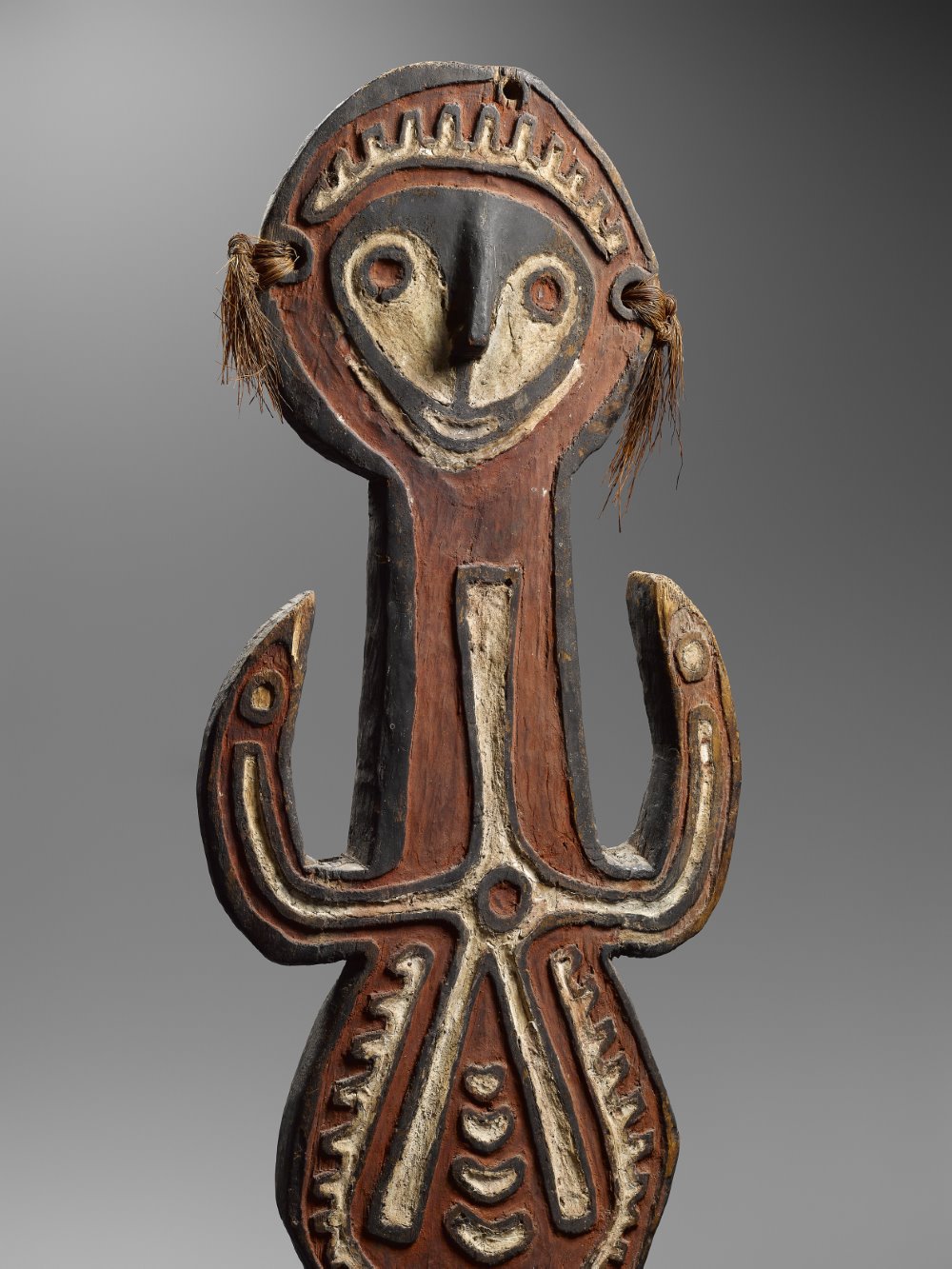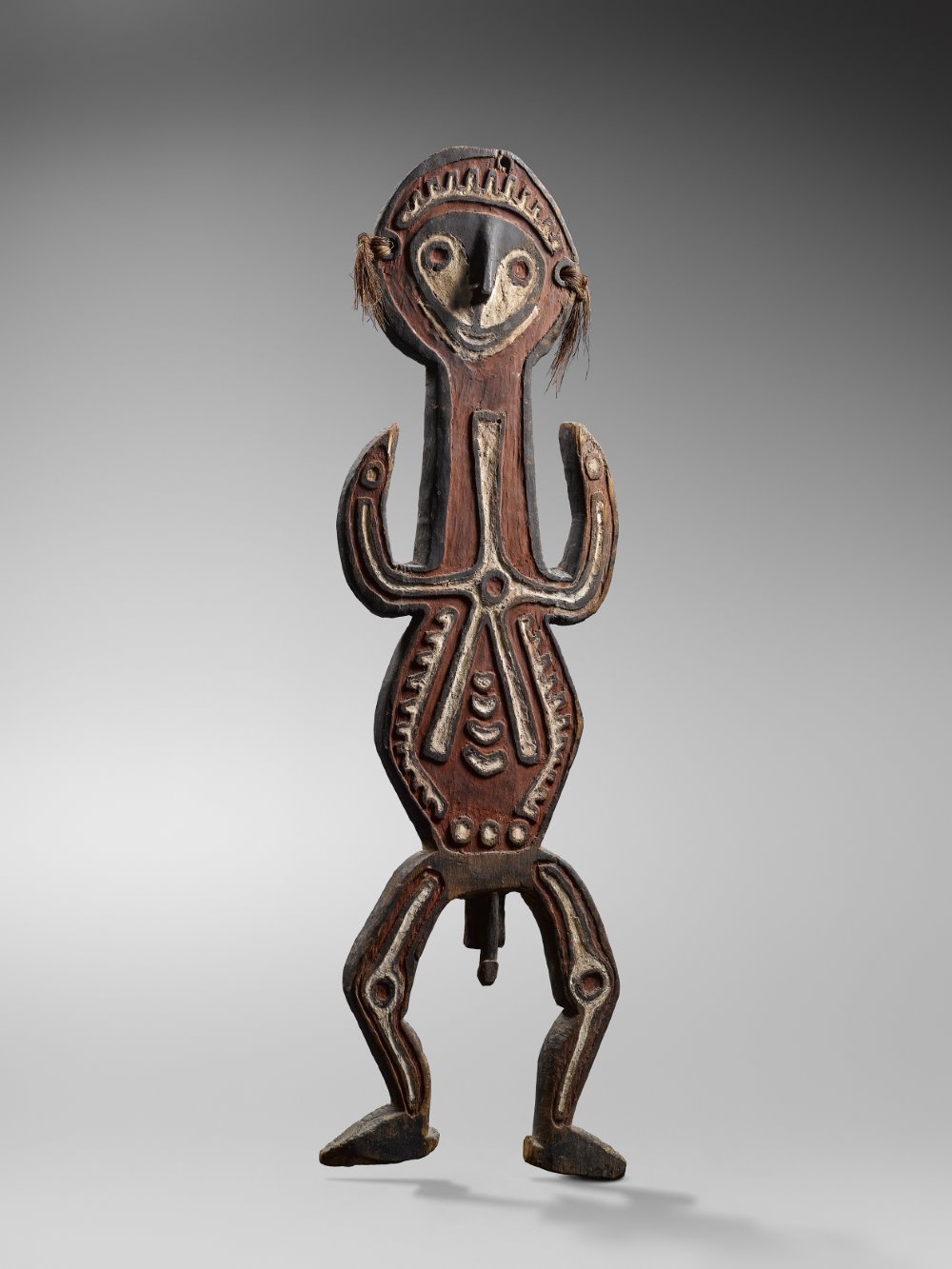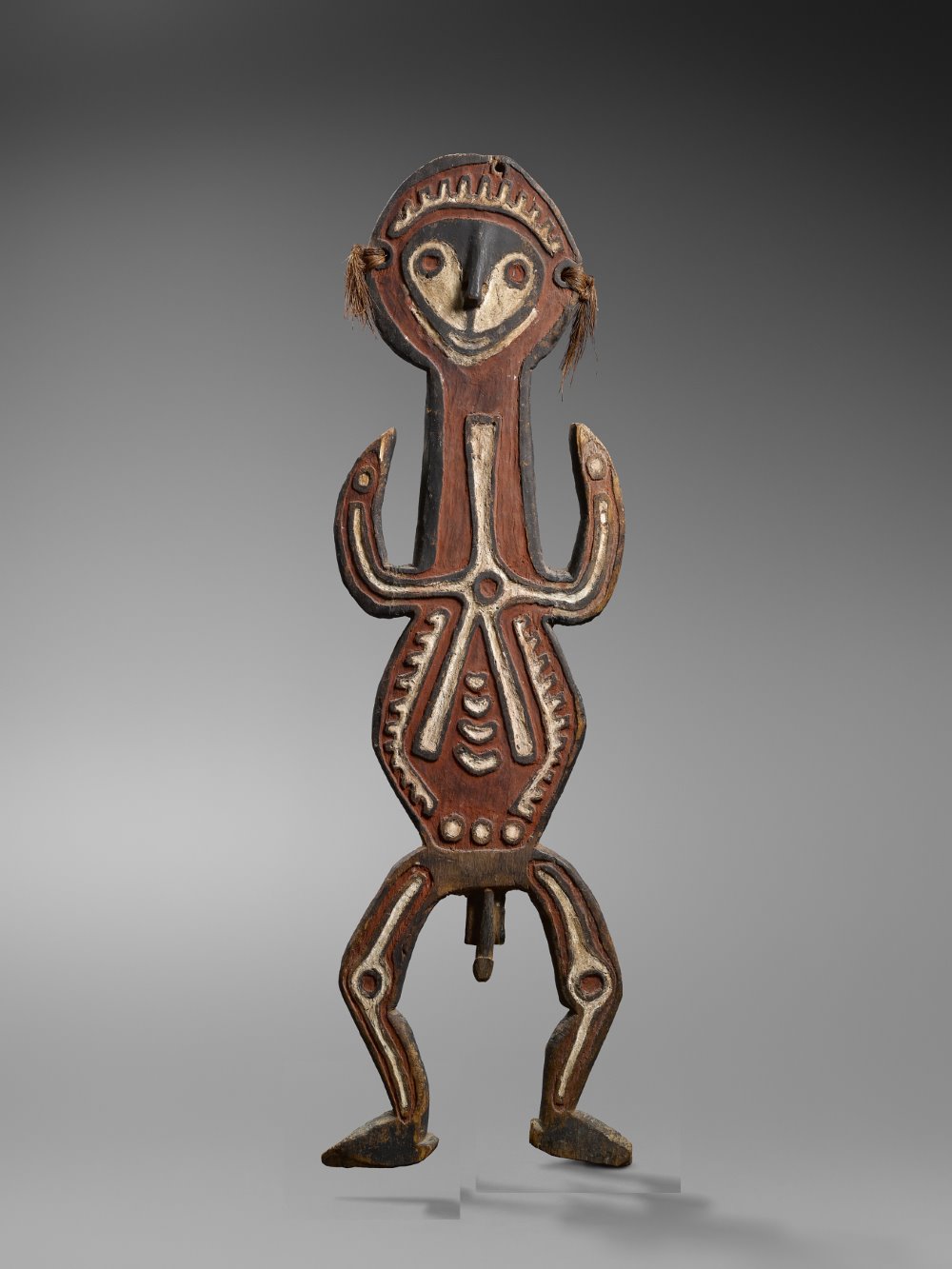


SCULPTURE KAKAME
Wood, pigments and fibers
Provenance: collected in 1966 by Thomas Schultze-Westrum; Mia and Loed van Bussel collection, Amsterdam, Netherlands
The two-dimensional boards and figures of the Gulf of Papua have, because of the qualities of their bas-relief designs, attracted the attention of many Western artists. Thus, the art of the Gulf of Papua formed one of the favorite artistic styles of Max Ernst, who assembled a collection of more than 25 woodcarvings from this region. Long referred to as a Bioma sculpture, this character is actually a Kakame sculpture. It represents the clan spirits in an anthropomorphic form. Kakame are placed in the Longhouses of Men near the Gope boards and smaller Bioma figures near the Skulls. These objects provide temporary shelter for ancestral spirits and remind the living of their presence. They are used as trophies offered to the spirits in thanks for the hunts.
In 1919, the Eastern Elema destroyed their objects and condemned their rituals in a demonstration called the “Vailala madness“. It was not until 1946 that Tom Kabu’s movement also encouraged the abandonment of rituals and objects in the Purari Delta. These events combined with the development of Christianity were such that the communities of the western Gulf abandoned their ritual arts during the 1960s and 1970s. In 1966, the German ethnologist, geologist and biologist Thomas SchultzeWestrum collected this superb example of Kakame in the Nahoromere Village. He noted at the time that many objects had already been destroyed. He specifies that the wooden objects were burned, broken, buried, hidden in the primary forest, piled up in small makeshift huts, or simply left abandoned and at the mercy of termites. The bright colors accentuate the visual effect provided by this ancestor styling. As often in the art of Melanesia, the color red refers to the divine and the color white to death.
According to John Friede some Kakame sculptures with arms in the air like the one presented here would have a direct relationship with the god Iriwake. This god is a mythological hero associated with headhunting. This divine entity is said to have his abode in the sky from where he releases thunder and lightning.